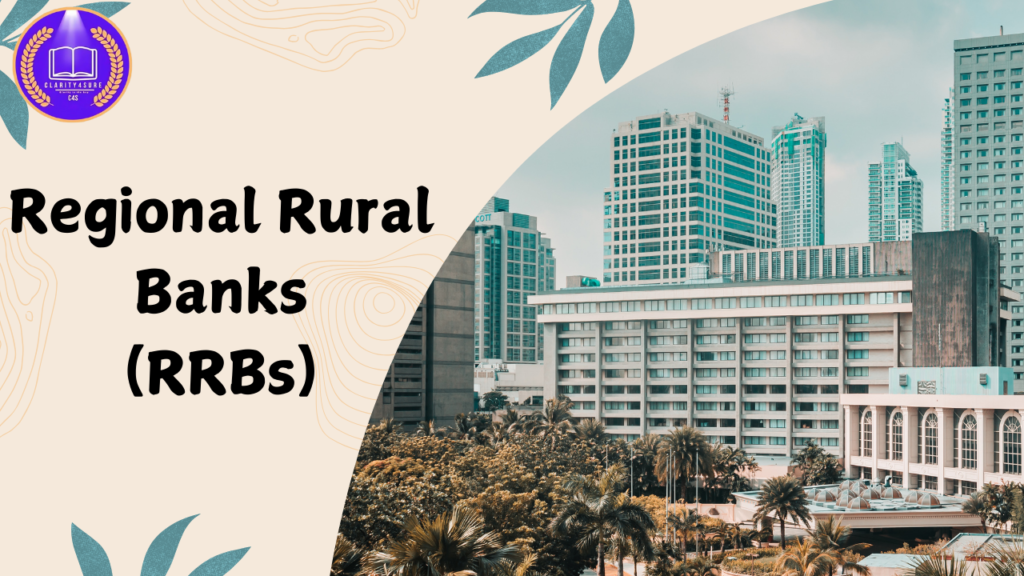
Introduction
Regional Rural Banks (RRBs) play a crucial role in India’s financial system, particularly in rural and semi-urban areas. They were established to provide financial services to rural populations, especially small farmers, artisans, agricultural laborers, and rural entrepreneurs.
Origin and History of RRBs
RRBs were established under the Regional Rural Banks Act, 1976 based on the recommendations of the Narasimham Committee on Rural Credit (1975). The primary aim was to bridge the credit gap in rural areas, promoting financial inclusion among marginalized communities.
The first RRB, Prathama Bank, was established on October 2, 1975 in Moradabad, Uttar Pradesh.
Objectives of RRBs
- Financial Inclusion:
- Provide easy access to banking services in rural areas.
- Credit Supply:
- Cater to the credit needs of small and marginal farmers, agricultural workers, and rural entrepreneurs.
- Rural Development:
- Support rural economic activities and promote self-sufficiency.
- Microfinance:
- Offer microloans for various income-generating activities in rural regions.
- Savings Mobilization:
- Encourage savings habits in rural households to improve financial literacy.
Ownership and Structure
RRBs are jointly owned by:
- Central Government (50%)
- State Government (15%)
- Sponsor Banks (35%)
Each RRB is sponsored by a public sector bank (PSB), which provides managerial assistance, financial support, and training. This tripartite ownership model ensures shared responsibility for RRB operations and growth.
Functions of RRBs
- Credit Services:
- Offer loans for agricultural activities, small businesses, housing, education, and consumption.
- Deposit Mobilization:
- Provide savings, recurring deposits, and fixed deposit schemes.
- Remittance Services:
- Facilitate money transfer and remittances for rural populations.
- Financial Products:
- Offer Kisan Credit Cards (KCC), insurance, pension schemes, and government-sponsored welfare programs.
- Microfinance:
- Promote self-help groups (SHGs) and joint liability groups (JLGs) to enhance rural entrepreneurship.
Performance of RRBs
RRBs have made significant contributions to rural credit growth in India. However, their performance has been mixed due to operational inefficiencies and regional disparities. Some RRBs have shown exceptional performance, while others have faced challenges like high non-performing assets (NPAs).
To enhance performance, the Amalgamation of RRBs was initiated to consolidate smaller RRBs for better operational efficiency and financial stability.
Challenges Faced by RRBs
- High NPAs:
- Rural borrowers often face crop failures, low prices, or natural disasters, leading to loan defaults.
- Limited Technology:
- Some RRBs are slow to adopt modern banking technologies like internet banking, mobile banking, and ATMs.
- Operational Inefficiency:
- High administrative costs and small-scale operations limit profitability.
- Lack of Skilled Manpower:
- Rural banks often face challenges in hiring and retaining qualified staff.
- Limited Financial Literacy:
- Many rural customers are unfamiliar with modern banking practices, leading to underutilization of services.
Government Reforms and Initiatives
Several measures have been taken to strengthen RRBs:
- Amalgamation of RRBs:
- Merging smaller RRBs to create larger entities with better financial health.
- Capital Infusion:
- Periodic recapitalization to meet regulatory capital adequacy norms.
- Technology Adoption:
- Introduction of Core Banking Solutions (CBS), mobile banking, and ATM networks for better customer service.
- Financial Inclusion Drives:
- Participation in government schemes like Pradhan Mantri Jan Dhan Yojana (PMJDY) and Direct Benefit Transfer (DBT) to improve financial inclusion.
Key Government Schemes Involving RRBs
RRBs play a critical role in implementing various government schemes, including:
- Pradhan Mantri Awas Yojana (PMAY):
- Housing loans for rural beneficiaries.
- Kisan Credit Card (KCC):
- Credit access for farmers at subsidized interest rates.
- Pradhan Mantri Suraksha Bima Yojana (PMSBY):
- Accident insurance scheme for rural populations.
- Atal Pension Yojana (APY):
- Pension scheme aimed at the unorganized sector.
- Stand-Up India Scheme:
- Support for women and SC/ST entrepreneurs with loans for greenfield enterprises.
Future Prospects of RRBs
To remain relevant and competitive, RRBs must:
- Adopt Digital Solutions:
- Invest in digital banking infrastructure to provide seamless services and expand their reach.
- Improve Financial Literacy:
- Conduct awareness programs to educate rural customers about banking products and services.
- Diversify Product Portfolio:
- Introduce new savings, investment, and insurance products tailored to rural needs.
- Strengthen Risk Management:
- Implement better risk assessment and management practices to reduce NPAs.
- Expand Green Financing:
- Promote sustainable agriculture and green technologies through dedicated credit schemes.
Conclusion
Regional Rural Banks play a pivotal role in promoting financial inclusion and rural development in India. While they face challenges, ongoing reforms and government initiatives aim to strengthen their operational efficiency and financial stability. By embracing digital technologies, improving customer service, and enhancing rural outreach, RRBs can continue to drive economic growth in rural India.
FAQs on RRBs
Q1. What are the key functions of RRBs?
A1. RRBs provide credit, accept deposits, facilitate remittances, and offer financial products like Kisan Credit Cards and insurance schemes.
Q2. How are RRBs different from commercial banks?
A2. RRBs primarily focus on rural customers and are jointly owned by the government, state, and sponsor banks, while commercial banks operate with a broader mandate.
Q3. How many RRBs are there in India?
A3. As of recent data, the number of RRBs has been reduced to 43 due to amalgamation efforts.
Q4. What is the role of the sponsor bank?
A4. Sponsor banks provide managerial and technical support to RRBs, including training, financial assistance, and guidance.



















